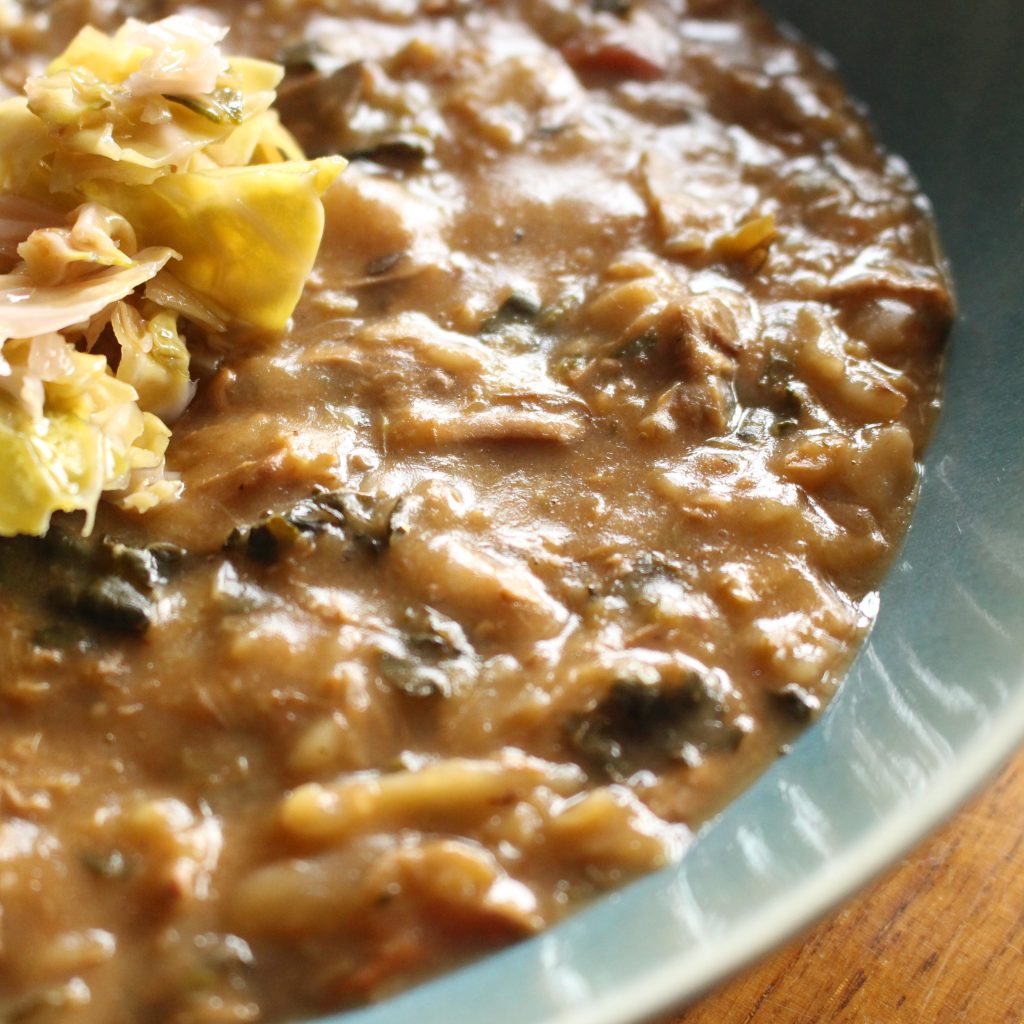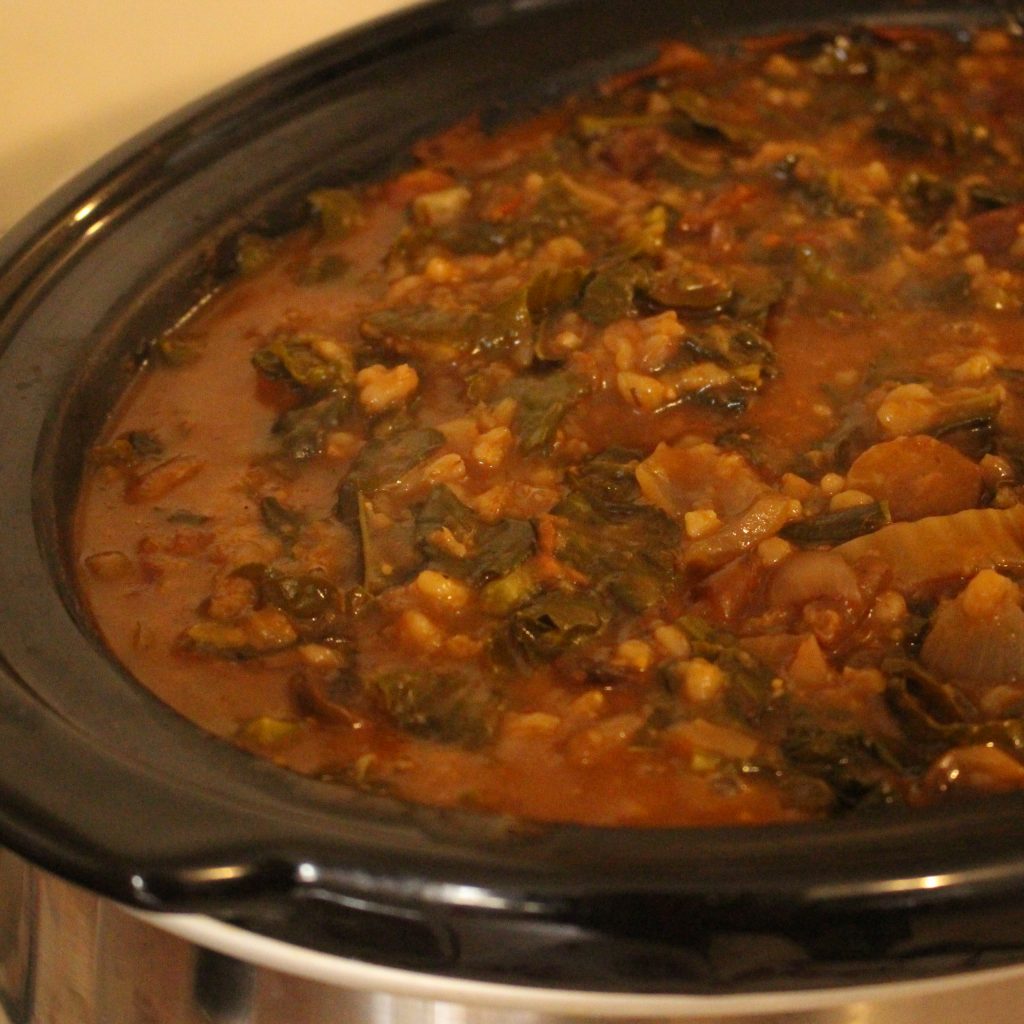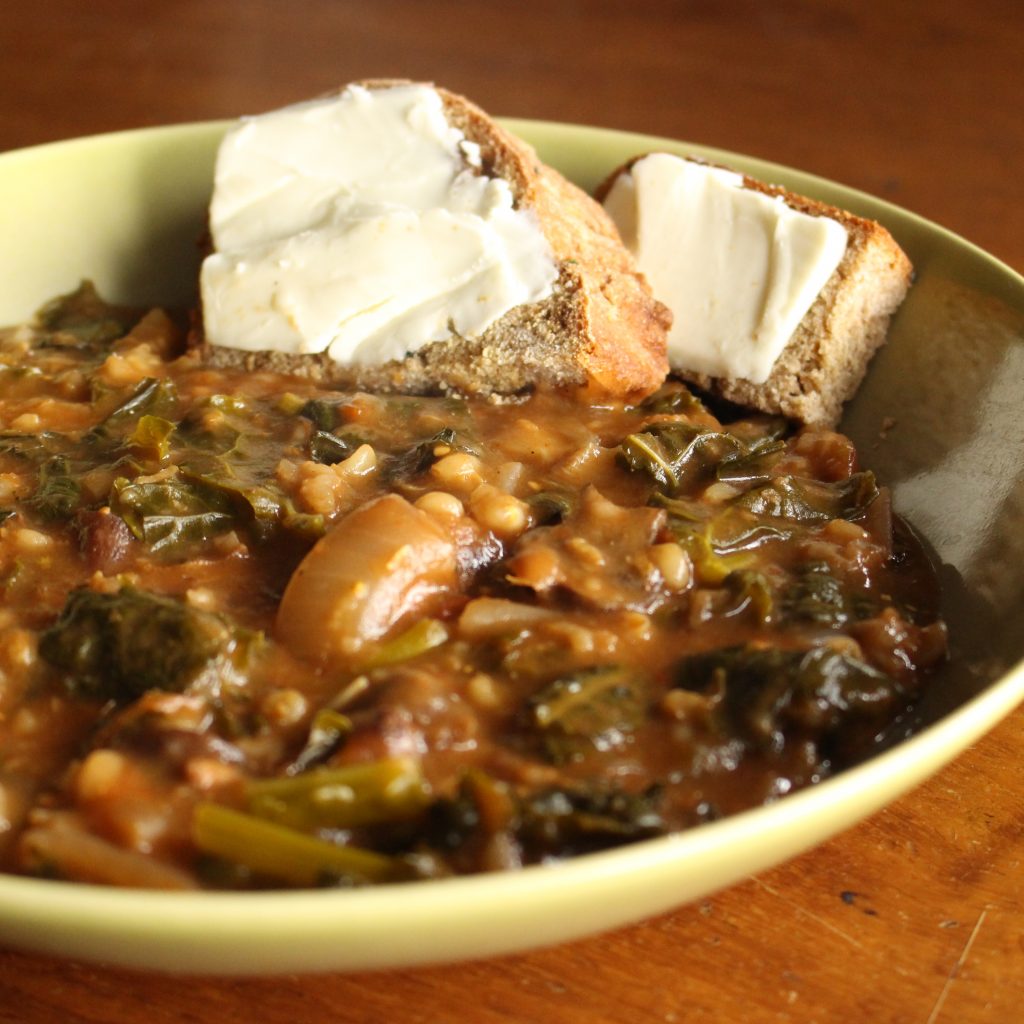
What’s better on a cold day than a large pot of super-comforting, thick and rich stew? Here’s one based on beef and barley that has built-in variation so you can make a beautiful stew for a cold day in a way that suits you.
Why Beef and Barley?
This is a great dish because it’s a carbohydrate, protein and fibre all-in-one, it’s easy to vary and can be made in bulk and kept in the fridge/freezer – it even improves with time! Barley, cooked slow and long, thickens the dish to amalgamate all the other ingredients into an amazing, delicious gloop!
Ingredients:
The list below is a starting point; these are the ingredients I usually base my own stew on:
beef
barley
onions
celery
garlic
tomato pulp
mushrooms
cabbage
black kale
Let’s take a look at how you could vary this, based on your own supply, needs and preferences:
Beef
This could be a form of diced stewing steak, a whole slice of beef bone-in, offal or even mince. Ancestral tradition recommends choosing a piece with fat. As well as being nutritionally sound, fat is a flavour-carrier and its presence will greatly enhance the taste of your final dish. If you can only get lean meat, think about adding extra fat to your pot.
Choose the quantity of beef based on how meaty you want the dish.
Many recipes suggest browning your meat before putting it into a slow-cooking environment. I do this when I have time, but the stew tastes great when I don’t too.
Barley
The most common form of dried barley is pearl barley, but you can also find pot barley, which has had less of the hull removed. Barley hull is hard, so pot barley requires more cooking than pearl barley to soften it thoroughly.
Traditional communities soaked grains in water plus a couple of tablespoons of an acidic medium (like vinegar, lemon juice or whey) before cooking, to help remove the mineral-depleting phytic acid. If you have time for this, do it for 8+ hours before you cook and your stew will be more nutritious.
If you can’t get barley, you could substitute wholegrain farro, wheat, rye or even rice.
Vegetables
The list above has much variety within it:
The onions could be red, white, yellow or shallots.
The cabbage could be white, green, savoy, Chinese, sweetheart (pointed), red or even sauerkraut,
The kale could be dark Tuscan cavolo nero or lighter curly kale.
The mushrooms could be any variety, fresh or dried.
The tomatoes could be fresh, tinned, pulp or concentrated puree.
What’s in season for you? What is available in the places you are shopping right now? Can you find ingredients that’ll support you local farmers? What do you and your family love? What combinations have you fancied trying for a while? What spices/herbs have you always wanted to try?
Here are other things you could base the vegetable part of your stew on:
Root vegetables – carrot, beet, sweet potato, potato, turnips, swede or celeriac.
Any type of greens, including green beans.
Beans.
Flavourings and condiments
Instead of solely water, you could use stock, a beer or stout and/or some wine.
To play around with flavours you could add bacon, worchestershire sauce, red wine vinegar, differently-flavoured salts or peppers or horseradish.
Spice or herb it up! How about thyme, oregano, bay leaves, coriander seeds, nigella seeds or mustard? What about differently-flavoured salts and peppers?

Cooking it:
Cooking slowly and for a long time is the way to get the best out of the barley.
You can use a slow-cooker, a stove top heavy-bottomed pot on a very low flame or an in-oven casserole.
The key to getting the dish right without too much stress is planning ahead with timings.
I have a 6.8 litre (7.19 quart) slow cooker that I’ll be using. My slow cooker is very slow (I’ve had others that cook much more quickly) so I’ll be setting it on low and cooking it overnight, for a total of around 16 hours. (n.b. My old slow cooker would have done it in about 8 hours.)
I add the onions to the pot first and then a few vegetables, before adding the barley (I do this to avoid the barley getting stuck to the bottom of the pot).
I don’t necessarily add all the vegetables at the beginning of the cook. I often let two-thirds of them soften in the cooker for a few hours (to create more room) before adding the remaining ones.
I usually add water to reach two-thirds of the height of the ingredients. I then stir the stew occasionally, distributing the barley and keeping it from sticking to the bottom of the pot. When I do that, I assess whether more water is needed. Before going to bed, I always ensure that the pot has enough water in it to cook overnight.
If you have pre-soaked the barley, you’ll need substantially less water in the final stew than if you used it dry.
If I am using a single piece of beef, I usually lay it close to the top of the stew. Then, an hour or so before the end of the cooking time, I will carefully take it out and place it on a plate. I shred the incredibly soft flesh and fat into small pieces and then stir them back into the stew.
Sharing it:
I want to see and hear about your process: your ingredients and why you chose them, how you’re cooking them, the finished dish, how you eat it and who you share it with. You can tag me on instagram @ancestral_kitchen. If you don’t have instagram, feel free to comment at the bottom of my blog post – you can upload your pictures there too.


Bring ancient grain baking into your kitchen!
Download my free 30-page guide with five healthy and tasty 100% ancient grains recipes.


This sounds delicious! Thanks for the different suggestions and also I like the idea of adding lard. I’ve used beef stew meat in the past, but it doesn’t have any fat on it, so I’m going to add lard, which I do have. 🤩
Excellent. Adding fat helps with the flavour too. I hope you enjoy 🙂